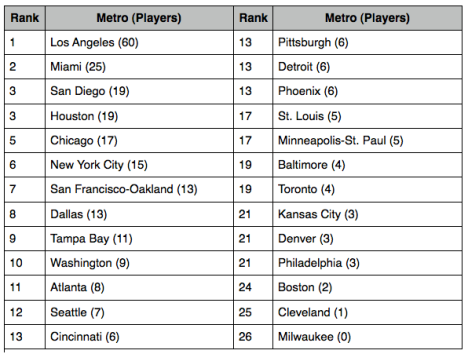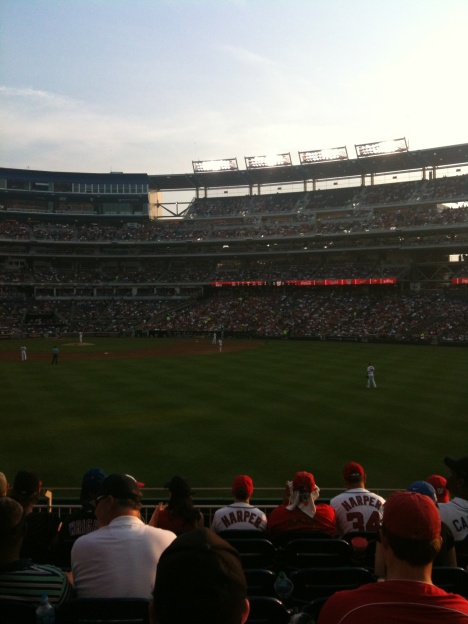In tomorrow’s civic election, Don Iveson is my pick for Mayor.
First, a disclosure and a couple of comments:
- Don and his wife Sarah are friends, and I am a part of Don’s campaign team.
- It’s worth reiterating that this is purely a personal opinion, not an endorsement on behalf of any organization I may be a part of.
- This is an endorsement for Don, not against any other candidate.
The last comment bears repeating. Edmonton is fortunate to have a deep pool of candidates to chose from. Karen Leibovici offers many attributes that would serve her well as Mayor, and while I have a different outlook than Kerry Diotte, his small government vision is an important part of the public discourse. That said, Don is the best pick, for reasons I will outline below. And no matter who wins – for both Mayor and Council – I hope they will take my advance advice for city-building in the last two sections.

Photo via Mack Male.
The Role of the Mayor
The Mayor of Edmonton does not possess the executive powers that Mayors of some cities do. Thus, the key functions of the office are three-fold – put forward a positive vision for where the city needs to go, serve as the face and advocate for the city, build consensus and bring key individuals, groups, and stakeholders together – in both government and the community. On all three, Don excels.
He understands the need to think long-term, and take incremental steps in the short-term to get there. His policies outlines not just short-term steps, but a long-term vision – what we’re trying to achieve a generation from now.
Throughout this campaign, he has stressed the need for the Mayor to take a lead in selling Edmonton to potential residents, investors, and businesses across the globe. He is an articulate, enthusiastic pitchman for Edmonton.
In six years on Council, he has shown an ability to negotiate behind the scenes, and find consensus and common ground with his peers. He has brought together diverse groups of stakeholders through initiatives like City of Learners. Outside of City Hall, he has worked with counterparts across the region to make progress on transit issues.
Experience
When discussing this, I think it’s important to make a delineation. Experience, in pure form, is what you’ve done – for better or worse. It’s important, but what matters the most is relevant experience, and accomplishment. On the latter, Don’s record extends to well before his terms on Council. He took The Gateway from a campus newspaper reliant on student fees to one with a thriving business model. He brought student groups, university administrators, and municipalities together to successfully negotiate a Universal Bus Pass for students. As a Councillor, he has provided leadership in advancing the environmental strategic plan, City of Learners, and regional cooperation on transit – to name three. In everything he’s done, Don has been a leader and secured significant achievements. The skills he has used to do so – vision, strategic thinking, bringing stakeholders together – will transfer to the role of Mayor.
Cities in the 21st Century
If the past generation or two have been about fixing the provinces’ role in confederation, the next two have to be about addressing the appropriate roles for cities and metropolitan areas. As it stands, we are equipping cities with 19th century tools and systems to address 21st century problems. Don gets the need to change the rules of the game, and in particular to work with Calgary and the province to find solutions that work for big cities today.
The investment in quality of life amenities such as transit, active transportation, and infill housing is something every city needs to do to be competitive going forward. Cities across North America are doing this. In the American energy belt, cities like Houston and Oklahoma City are making investments to become more urban and offer better amenities. Same with the Mountain West cities of Denver and Salt Lake City. Cities are undergoing a transformation, and Don sees where Edmonton has to go to meet this demand. He speaks the same language that I hear from thought leaders online, and in forums such as the ICIC Summit and New Partners for Smart Growth.
Edmonton and the Next 5-10 Years
It has been implied, if not said outright, that Edmonton needs a manager, not a visionary, given the planning work that has been done recently. This is dangerous thinking. Certainly, the implementation of the downtown plan, Blatchford Development, and LRT network are crucial. Yet, those alone will not build the city we want. If we are serious about competing for people, investment, and jobs with cities across the country (never mind the continent or the globe), we have to keep pushing forward. With key approvals in place, we are not post-vision. We will never be. Sustainability of communities and infrastructure, economic diversification, poverty and inclusion – to name three – continue to be issues that need work.
Vision has, unfortunately, come to be synonymous with spending lots of money. The things touted as “visionary”, such as arenas and convention centres, come with hefty price tags. But significant change can occur through government actions that come with low costs. Don has a record of supporting these. Think of the Open Data initiative, relaxation of patio and food truck restrictions, and Start-Up Edmonton organization. All come with small price tags, but yield big results – particularly in the city’s core. Should it be successful, his recent inquiry into the caveats on former Safeway sites may have a similar catalyzing effect in mature neighbourhoods.
Should we rest on our laurels, Edmonton will fall behind. Other cities are also making investments in downtown, infill housing, and public transportation. Over the past 5 years, I’ve been to more than 20 cities across Canada and the United States – many of them several times. I see the same investments and changes happening everywhere – new housing and amenities in the core, cool independent restaurants and pubs, quality of life investments in trails and parks.
It’s critical that Edmonton continue to be aggressive. There may, frankly, never be a better time for Edmonton to make the leap and join the conversation of Canada’s leading cities. We can never assume continue economic prosperity is a guarantee, and this is especially true in a resource-driven economy. The stars are aligned for Edmonton. We’re a leading city for economic growth, and have low unemployment. Meanwhile, other cities face challenges. Toronto and Vancouver are increasingly unaffordable for many; Montreal continues to suffer because of regressive provincial battles over culture and identity. While the West does relatively well, the rest of Central Canada and much of the Atlantic is stuck in neutral. This will not always be the case.
If Edmonton is a city of ambition, now is the time to keep moving forward. On the region, economy, and quality of life, Don has shown that he gets where Edmonton has to go. As a Councillor, he has demonstrated the skills to help get us there.
Filed under: Cities | Tagged: #yegvote, Edmonton | Leave a comment »



















